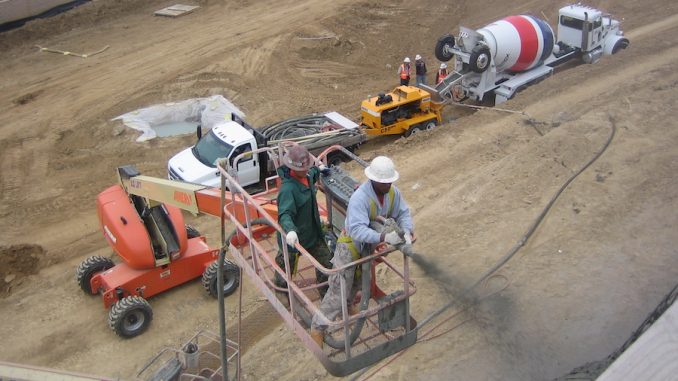What Is Shotcrete and When Is It Used?
There are two types of shotcrete: wet and dry. Depending on the project, the two types of Shotcrete process may be used simultaneously or in different phases. However, wet shotcrete is typically used in more complex projects such as bridges. Wet shotcrete has advantages over dry shotcrete, including more durability, lower cost, and a faster cure time. In this article, we’ll discuss the benefits and drawbacks of both types of shotcrete.
Applications
The main difference between wet-mix and dry-mix shotcrete is the amount of water that is added to the mix. Wet-mix shotcrete requires the addition of water and a nozzle to deliver the mixture. This process creates less dust, rebound, and waste than dry-mix shotcrete. The wet-mix method also makes it possible to place larger volumes in less time. Depending on the application, the type of shotcrete you need will depend on its use.

To apply shotcrete, dry components are first slightly dampened to minimize dust. Then, compressed air is introduced through a feed bowl or barrel. The nozzle then projects the material to the surface. The material can be passed 45 to 100 meters vertically and 300 to 500 meters horizontally. Shotcrete hardware is designed to ensure a consistent mortar inventory. In addition to its high-speed, high-pressure pumping capability, shotcrete also has the added advantage of allowing it to be placed at high-rise structures.
Performance specifications
In order to properly assess the strength and quality of shotcrete, the porosity of the material is measured directly. Generally, a higher porosity means a stronger concrete. However, different European Agencies have different functional requirements for rock support. Here are some examples of where shotcrete is used. Read on to find out more about this versatile material. Performance specifications of shotcrete vary according to its application and environment.
Testing shall be performed before use. The Contractor shall submit a method for adding steel fibers to shotcrete before allowing production operations. The Contractor must also demonstrate this procedure in the field prior to use. The Contractor must use a screen with a mesh size of 1-1/2″ to two-1/2″ for the tests. The City Engineer may not require the Contractor to batch through the screen, but they must ensure that no fiber balls form.
Costs
While the cost of shotcrete is lower than poured concrete and gunite, there are drawbacks. While shotcrete may save contractors on labor, equipment, and production costs, the method is not as precise or aesthetically pleasing. Also, shotcrete must be applied immediately and cannot be started and stopped during the process. While the process may be cheaper overall, it is not recommended for large projects, structural piers, or foundations.
There are some significant advantages of shotcrete construction. The cost of recycled aggregates is less than 15 percent of the total shotcrete production cost. However, the increase in thickness means higher consumption of other components. The cost per cubic meter is shown in table 9.
Methods of application
Shotcrete is a mix of cement, aggregate, admixture, and water. It is a relatively quick process used when formwork is impractical or prohibitively expensive. It is easy to start and stop, and clean up is simple. The shotcrete gun can be moved up to 500 feet vertically and 1,000 feet horizontally. It is a cost-effective method, and allows for easy material handling in hard-to-reach locations.
Methods of application of shotcrete vary depending on the application. Shotcrete is often used in underground excavations and in the protection of rock surfaces that will deteriorate when exposed to the atmosphere. This method is a good choice for large areas and thin sections alike. To learn more about shotcreting, click on the links below:

